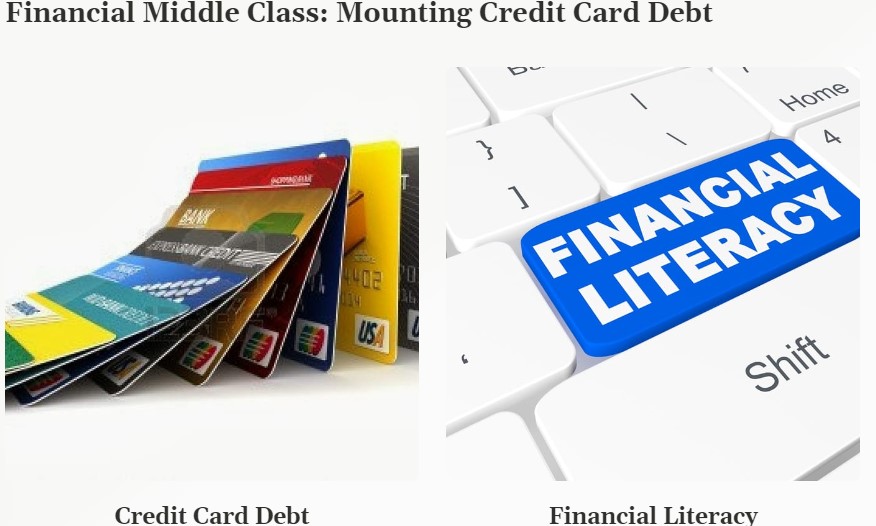Mounting Credit Card Debt Sends Shockwaves Through U.S. Economy
In a sobering financial milestone, Americans now grapple with an unsettling reality: their collective credit card debt has surged past the ominous $1 trillion mark.
As the average American consumer stares at a credit card balance of $7,600, this alarming revelation, unveiled by the Federal Reserve Bank of New York, has sent shockwaves through the financial world, prompting experts to scrutinize the broader implications for the nation’s economic landscape.
Consumers leaning on their credit cards to subsidize their living costs might highlight the magnitude of the issue and the potential repercussions that loom on the horizon.
Unpacking the Causes
The surge in credit card debt is not a simplistic equation but rather a complex interplay of factors. Economists and experts point to the compounding effects of surging living costs, unexpected medical expenses, and a relentless culture of consumerism.
As the cost of living continues its upward trajectory, a growing number of Americans are relying on credit cards to bridge the gap between their income and expenses.
The aftermath of the COVID-19 pandemic has also played a pivotal role in this crisis.
While government stimulus checks and relief packages provided temporary relief for some, they failed to address the fundamental financial vulnerabilities that many households faced.
A Striking Trend: High Earners Vulnerable
A surprising revelation in this credit card debt saga is the vulnerability of high-income households. The Washington Post’s reporting reveals that affluent individuals are accumulating credit card balances at an alarming pace. This trend underscores deeper systemic issues that transcend income brackets.
Economic Implications Loom
The repercussions of surging credit card debt ripple across the broader economy, raising concerns among experts. Potential consequences include heightened inflationary pressures, restrained consumer spending, and interest rate fluctuations.
Inflation, a perpetual concern for the Federal Reserve and economists, could worsen as consumers divert larger portions of their income toward servicing their debt. This, in turn, may lead to a decline in overall consumer spending, a historical driver of economic growth.
As individuals across the nation grapple with mounting credit card debt, financial experts, including those at The Motley Fool, stress the importance of sound financial management.
Strategies like budgeting, debt consolidation, and professional financial advice can empower individuals to regain control of their finances.
In response to this looming crisis, government officials and regulatory bodies face mounting pressure to take action.
Policymakers are considering various measures, including stricter regulations on credit card companies and enhanced financial literacy programs. These initiatives are critical steps toward addressing the root causes of the problem.
The Outlook Remains Uncertain
The outlook for credit card debt remains uncertain. Credit card debt will continue to grow if underlying issues are not proactively addressed. This issue demands ongoing attention and proactive measures from both individuals and policymakers.
Conclusion
The staggering $1.03 trillion credit card debt in the United States is not merely a statistic; it is a reflection of deeper economic challenges that demand immediate action.
The consequences extend far beyond the realm of numbers, affecting individuals from all walks of life and casting a shadow over the nation’s economic stability.
To safeguard our financial future, we must collectively confront this issue with urgency, implementing both individual financial prudence and well-informed government policies.
Failure to do so may lead us down a perilous path with severe consequences for the U.S. economy and the financial well-being of its citizens.
